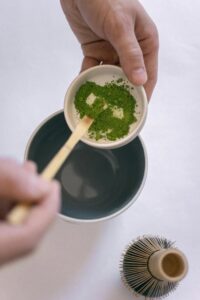 |
| Purslane sauted in butter with onions and garlic. |
I love foraging. I love writing posts about foraging here on my blog. But every time I go to write a post on foraging, I start questioning myself. Will this post actually help most of my readers? Does this plant actually grow where my readers live and not just locally? Is the plant easy to find, especially for readers who don’t live in the country side? Because of different climates, is this plant actually in season where most of my readers live (various parts of the US)? Does the plant taste good enough and not entail too much hard work that most readers will actually try it out themselves?
Purslane (portulaca oleracea– also known as pigweed, verdolaga, pusley, or little hogweed) poses none of these problems, and is actually the perfect foraged food to feature on my blog.
Why? Because it is absolutely delicious and mild. You don’t need to be an exotic foods lover to enjoy eating purslane. It takes no advance preparation to be able to eat it and has many different culinary uses.
But the best part about purslane is it grows EVERYWHERE! There isn’t a single continent in the world other than Antarctica that doesn’t have purslane growing on it. Whether you live in Canada, New England, Southern US, the Rockies, the Pacific Northwest, the Great Plains, Europe, Australia, New Zealand, or South Africa (and a host of other places I didn’t mention because this list was getting long), you’re in luck! Because come summer, and this plant grows where you do. You just need to open your eyes.
Purslane likes heat, so is likely to come up during the hottest part of the summer, and doesn’t need so much water either, but does well even where it’s very rainy during the summer. It grows amidst other plants on grassy knolls, from between cracks in driveways and sidewalks, among your other plants in your vegetable garden, etc… The only thing it doesn’t really like is too much shade or too much water.
Why would you want to forage purslane?
Well, for starters, because it tastes nice. Purslane has a taste that is hard to describe. I’d say it tastes somewhat like a cross between cucumbers and green beans, with a bit of lemon, when raw, and when cooked it still tastes like that, with the slightest touch of asparagus (but barely- and I’ve never heard anyone else describe the taste as asparagusy). An interesting fact- the earlier in the morning you pick purslane, the more sour it is, something having to do with the way the plant does its photosynthesis.
Purslane can be eaten raw in salads, sauted with onions and garlic, in stir fries, and in soups. I’ve cooked purslane with chicken, cooked it in an omelet, used it as a topping for pizza, to name but a few more options.
It’s very yummy and good for non adventerous eaters. Two people I know who decidedly do NOT like anything “weird” or “exotic” or “funky” ate some purslane that I offered them, and then kept on asking me for more and more, they liked it that much.
The other reason why someone might want to forage purslane is it is tremendously healthy. It has one of the highest sources of omega 3 fatty acids of any plant source, and is very rich in vitamins and minerals as well. (See here for a
more complete list.) On top of everything else, as a foraged plant, its naturally organic, and it’s free!
How do you identify purslane?
Purslane grows out from one main taproot, and then grows in a rosette, sprawling out in all directions. Sometimes, as in the pictures below, the plant is flat against the ground, but sometimes it grows with its “branches” going upward. It never reaches too high though, even if it isn’t flat against the ground, as it grows more out than up.


Purslane’s stem ranges from a green to pink to red, and sometimes can be brown. Its stem can be quite thick- as wide as a finger towards the middle of the rosette, and tapers down to a thin stem at the outside. There often are thinner stems branching off of each larger stem. Along the stems at regular intervals are thick, fleshy, rounded teardrop shaped leaves.
The top of the leaves are a shiny, dark green, while the underside is a more matted light grey green color. The leaves retain water; they’re thick like and remind me of jade leaves.
Purslane has small yellow flowers that only open up in the morning. (I don’t have a picture of that.) When mature, they have seed pods that crack open, scattering little black seeds (roughly the size of poppy seeds) everywhere!
 |
| A bunch of picked purslane. Note the varying color of the stems. |
 |
| Close up of an individual stem and leaves of a purslane plant. Note the seed pods containing little black seeds and the black seeds on the table. |
The one thing important to know about purslane is that there is a “look alike” plant known as spurge, that might be mistaken for purslane, and it is poisonous.
This is spurge.
The stems of spurge are much thinner than purslane stems, and spurge leaves are thin, unlike purslane’s thick, succulent leaves.
Spurge is poisonous, and you don’t want to be eating it, but fortunately it’s easy to tell them apart with one simple trick. When you break spurge’s stem, a white, milky sap will leak out of it. When you break purslane’s stem, you get nothing.
Grow Purslane
If you’re someone like me who doesn’t have that much success with gardening, because you usually forget to water or take care of your plants, or if you just have a window box or two and want to be able to grow some food that’ll replenish itself quickly so you get food for a long while, growing purslane is for you.
If you’re able to get your hands on some purslane, instead of washing the plants directly in the sink, wash them in a large bowl of water. When you take out the purslane, you will notice many, many, many black seeds remaining in the water.
Take this water, pour it into your window boxes (or your garden), and after a day or two, water the dirt again. Water somewhat every day or other day until you see some little things poking up through the ground. This is your baby purslane plant! Don’t get the dirt too wet, just make sure it doesn’t dry out too much either at this stage.
Once you see your purslane start growing, water every day or other day, and watch it grow bigger and bigger. When it seems big enough, cut back some stems and eat them.
You totally don’t have to be vigilant about watering it. I’ve gone on vacation for nearly a week and came back to an overflowing planter box filled with really healthy, succulent purslane.
I try to water my purslane, now that it’s big, once every other day, but at the least, once a week.
Purslane is very, very forgiving, and its the easiest thing I ever grew.
And it just keeps replenishing and replenishing itself, so you don’t really run out.
 |
| One side of one of my two planter boxes filled with purslane. How I make sure to never run out of this very yummy veggie. |
Have you ever eaten purslane before? What did you think of it? How would you describe the taste? How do you enjoy it most?
If you’ve never picked or eaten purslane before, do you think you’ve ever seen this plant growing in your area? Do you think you’d feel comfortable enough after reading this post to be able to identify purslane and pick it and eat it?
Do you have anything growing in your garden now, or in window boxes? What do you have growing and providing your family with food?
Linking up to Fat Tuesday, Hearth and Soul Blog Hop, Healthy 2day Wednesday, Real Food Wednesday, Wildcrafting Wednesday, Pennywise Platter Thursday, Simple Lives Thursday, Fight Back Friday, Frugal Friday, Freaky Friday, Monday Mania, Tasty Tuesday, Traditional Tuesday, Frugal Tip Tuesday,












0 Responses
There is a flowering version that I used to plant and left the others in the ground long enough to see the small yellow flowers. Are these edible as well. I will not pull the ones with the yellow flowers…….will try this new find in my next salad.
I got some today, but it has pink leaves. Same or different? Also do they survive inside during the winter? The person I bought it from wouldn't give me a straight answer. Thanks!
I enjoyed reading all about purslane and is very educative Always liked purslane with out knowing the name used in my lentil soup, tastes great. I have them in my garden and was not sure it is the same purslane was buying. Now I know and thanks a lot about the information especially omega 3 as i am a total vegetarian.
looking for similar information
regards
Bhagi prasad
You don't have to grow it from seeds! You can just cut a segment of stem and stick it in the soil, and you get a new purslane plant! I don't even water mine and it grows like kudzu.
I've never tried eating purslane but I will do that soon. I believe the other plant is sometimes called "milkweed" where I grew up and I was warned to stay away from it as a kid. If it's what I think it is, there's a milky substance that comes out when you break the stem.
Thank you very much,Penny, I shall forage where I live in the Rockies. I know I have seen it in my walks.
I'm 64 years old and as a youngster I would pick this plant and eat it loved the taste and tangy flavor back then didn't know it was so healthy to eat live in south tx now haven't really seen it here but would still pick it very good article
I'm 64 years old and as a youngster I would pick this plant and eat it loved the taste and tangy flavor back then didn't know it was so healthy to eat live in south tx now haven't really seen it here but would still pick it very good article
I don't know if this blog is still active. I am reluctant to try what I believe to be Purslane growing on the rock beds here in S. Florida(N Fort Myers). I like the idea of breaking a stem and if it's white sap don't eat it. I have some I pulled out of the ground today and transplanted into a pot. I watered it and gonna wait a couple days for it to come back.
We have purslane in abundance, so we juice it and freeze in ice cube containers and then add it to blended drinks or smoothies as some say
We have purslane in abundance, so we juice it and freeze in ice cube containers and then add it to blended drinks or smoothies as some say
Just picked some…but am very confused: there's no milky substance when I break the stems, but the leaves are pretty flat, so I put it in water to see if it will plump up! Splurge looks sooo similar..😖